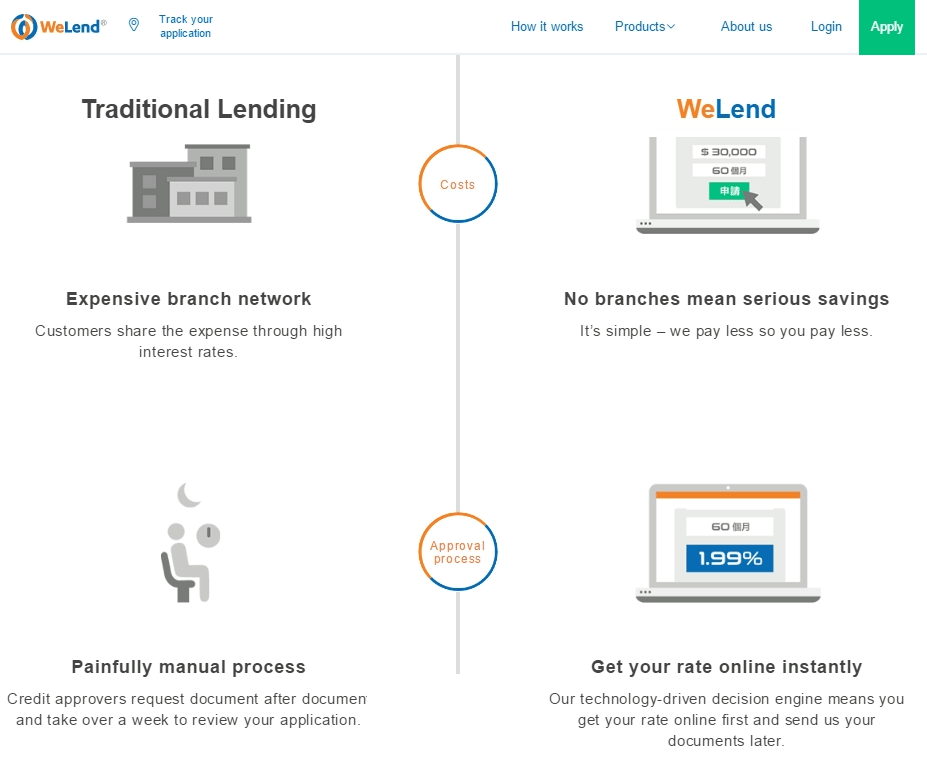
WeLab Attracts High-income Young Professionals Through Partnerships With Financial Institutions
by Fintech News Hong Kong November 9, 2016WeLab, one of China’s largest mobile lending and credit analytics platforms, is leveraging further into traditional financial institutions’ war chests to grow its capability to issue loans.
They have entered a partnership with several financial institutions in China, including Guangdong Nanyue Bank and Jinshang Consumer Finance, to provide loans below RMB500,000 (US$73,730) ticket size for customers in the mainland.
This follows WeLab securing a credit facility of US$25 million from ING Bank in September, with plans for a syndication loan to raise another US$50 million for its Hong Kong operations by the year’s end.
“I think it is a strong validation for us, because if you look across Asia, and even the world right, there are still not many cases of banks lending money through Fintech companies,” said WeLab Founder and CEO Simon Loong, referring to the firm’s Business to Business to Consumer model (B2B2C) model.
He said this signalized how WeLab had gone past the stage of an early stage startup and was attracting mainstream customers that banks themselves want to attract.
“We are moving into the next phase. In the past, people thought as a small Fintech, you usually attract customers that the banks reject… we are now attracting high-income young professionals (20-35 years-old),” he said.
Exposure To High-income Young Professionals
Though 80% of loans disbursed to WeLab’s 8 million customers were through their China business Wolaidai (我来贷), inevitably the ticket sizes in Hong Kong were higher reflecting the higher income levels.
WeLab’s customer base on its Hong Kong arm WeLend now drew from the 75th percentile, their borrowers’ average salary at 22,000HKD (2,800US$) compared to the HK salary average of 15,000HKD (1,900US$).
Loong said banks already had a base of very loyal, slightly older customers, but through WeLab they could lend money and get exposure to the younger population.
This proved to be an attractive proposition for banks, allowing them to leverage off WeLab’s big data analytics, risk management and customer acquisition.
The firm also boasted consistency in the form of high customer retention with around 30% of loans by repeat customers and their risk adjusted return (a portfolio’s profitability after accounting for credit loss) improving by nearly 40% year on year.
Loong said loans continued to be around 1,000-5,000US$ to be repaid in 12 months, though they considered increasing the cap for repeat customers that built a more comfortable track record.










